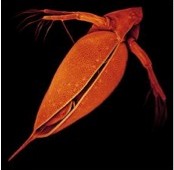DOE JGI Highlight: First genome of a Harmful Algal Bloom species
Algae play key roles in the global carbon cycle, helping trap carbon emissions. But some algal species can bloom, discoloring coastal waters and reduce the amount of light and oxygen available in the ecosystem. To describe these events, the term “harmful algal blooms” (HABs) was introduced two decades ago to note that accumulation of algal… [Read More]
